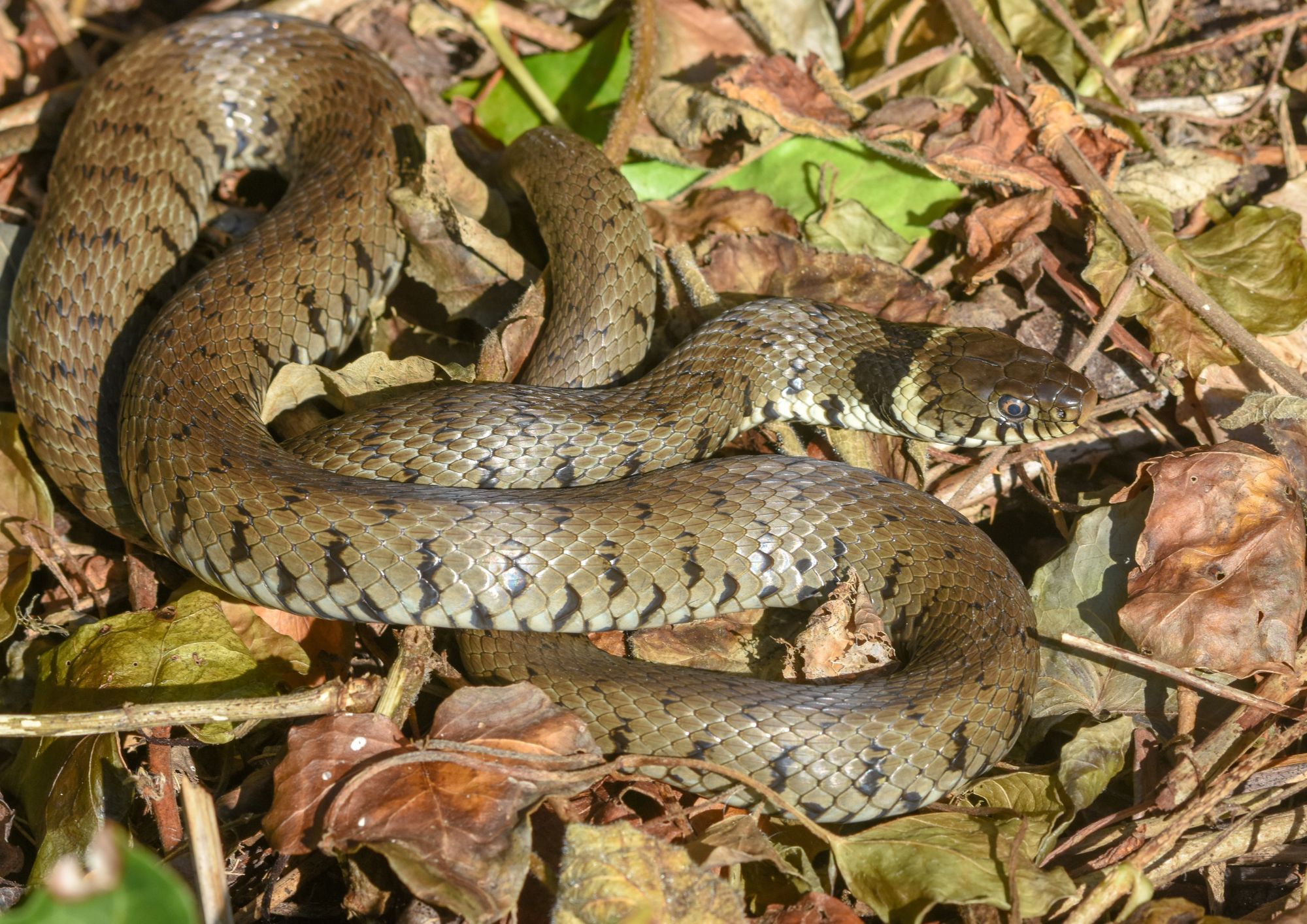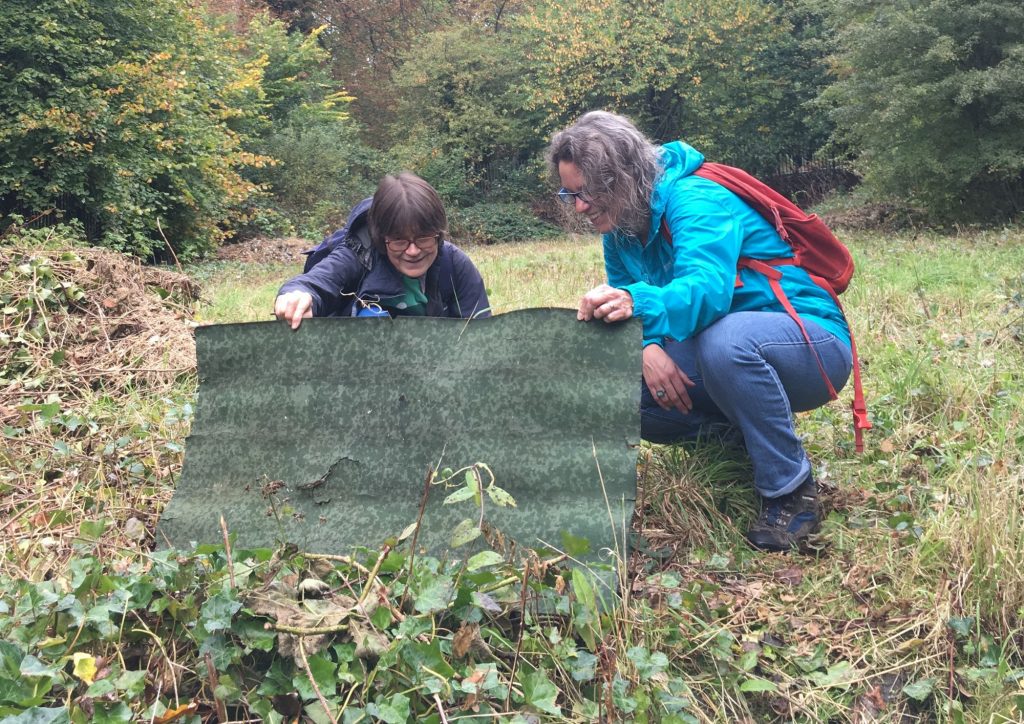Seen a snake on Hampstead Heath lately?
Don’t be scared – they want to catch frogs, not humans
Thursday, 4th April — By Frankie Lister-Fell

One of the grass snakes living on the Heath
SNAKE monitoring has begun on Hampstead Heath again as volunteers laid out this year’s “refuges” to attract the park’s resident grass snakes last Tuesday.
As the reptiles come out of hibernation this month, volunteers at conservation organisation Heath Hands are hoping to record another bumper year of grass snake sightings across the green space.
In 2023 the team recorded 148 sightings, with the earliest grass snake found on April 11 and the last recorded on October 28.
Programme manager Karin Oleinikova, who lives near the Heath, told the New Journal that the 2023 numbers represented sightings.
“Obviously these could be the same snakes that we see over and over again so it doesn’t mean the population is that [figure] but there’s a continued presence of snakes,” she said.
“We’ve got more abundant records than in previous years. So it’s good news. We’ve had little grass snakes so we know the population is breeding there.”
And early signs this year are promising.
Ms Oleinikova said: “When we were just setting out the transect [a set route that volunteers walk to monitor the snakes] we saw there were some eggshells on a big compost heap of hay that we’re very excited about.”
But don’t be alarmed if you spot a one-metre-long brown snake slithering through the grasses – or even swimming next to you in the ponds – the scaly creatures are timid, non-venomous, and are most likely preoccupied with catching frogs.
“One thing people may not know is that they can swim. It is a little freaky,” said Ms Oleinikova.
“I’ve only ever seen one swimming in one of the small ponds that no one swims in. They swim right at the surface, which I think is a bit reassuring. They’re more likely to go into more shallow parts where the frogs are.”
The slippery reptiles aren’t poisonous but they secrete a “foul smelling” substance when they’re picked up, so predators – usually herons, birds of prey and foxes – assume they’re dead.
Last week teams of volunteers walked along the four different transects, one near Kenwood and the rest on the north-eastern side of the Heath, and placed the “refuges” on the ground. These are sheets of corrugated roofing material that grass snakes like to shelter under.

Volunteer Jackie Lowe and Karen Oleinikova
The data tracks the net grass snake population over time and informs the Heath’s conservation management.
“The grass snakes like it because the material gets warm,” Ms Oleinikova said.
“They are cold-blooded. They rely on the heat of the sun to warm up and be able to move around. The refuges are a nice warm place and sheltered from any predators, so passing birds or whatever.
“They quite like to hang out near the ponds. And the main places where we do see them are towards the ponds on the Highgate side of the Heath.
“They are sensitive to vibrations so they try to keep off the beaten track. We see more in the fenced off areas of the Heath.”
Volunteers might find an abundance of wildlife when they lift up the refuges, from voles to newts.
And sometimes the odd escapee pets, such as coral snakes.
Heath Hands also monitors hedgehogs, stag beetles, amphibians, butterflies and dragonflies.

